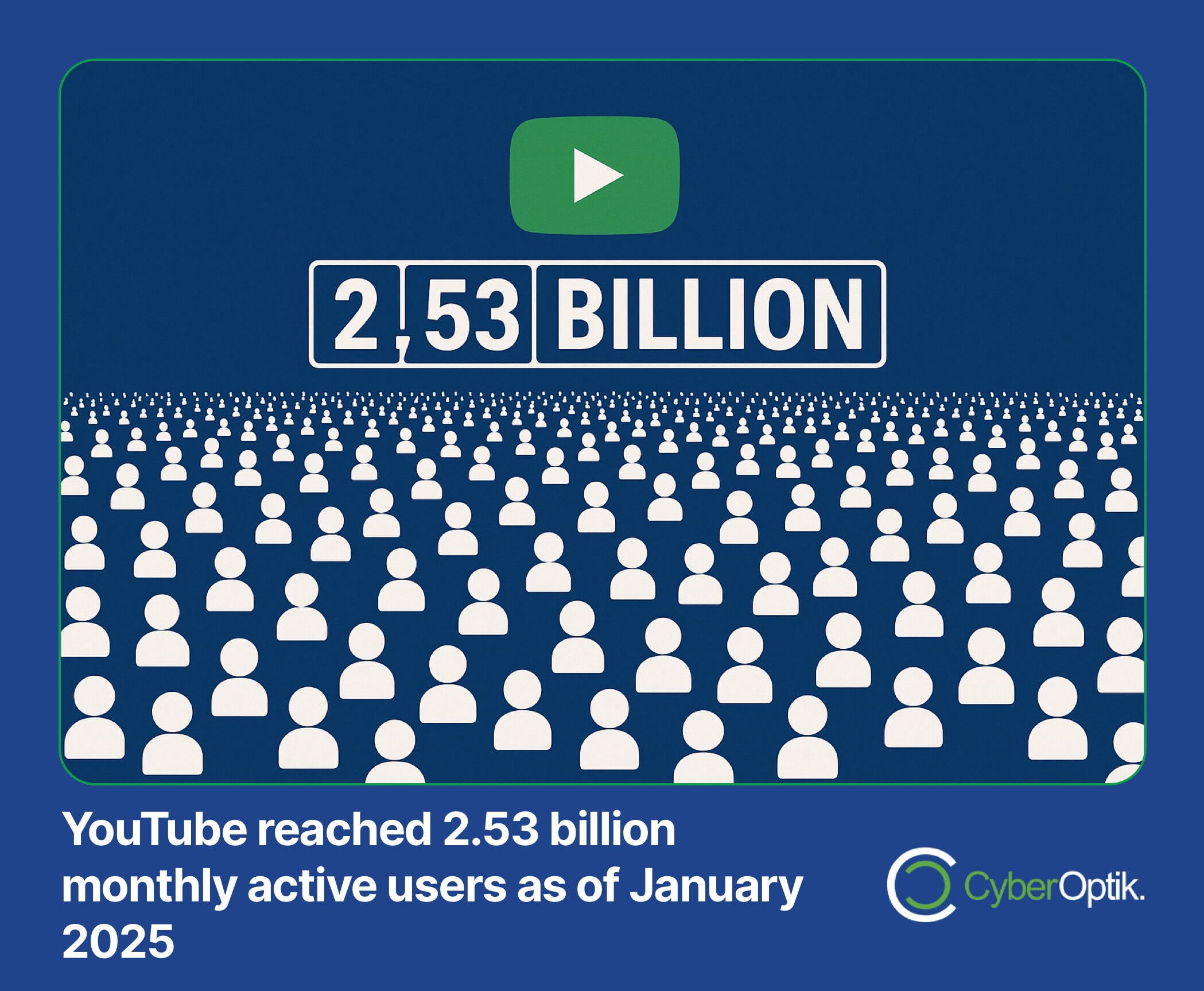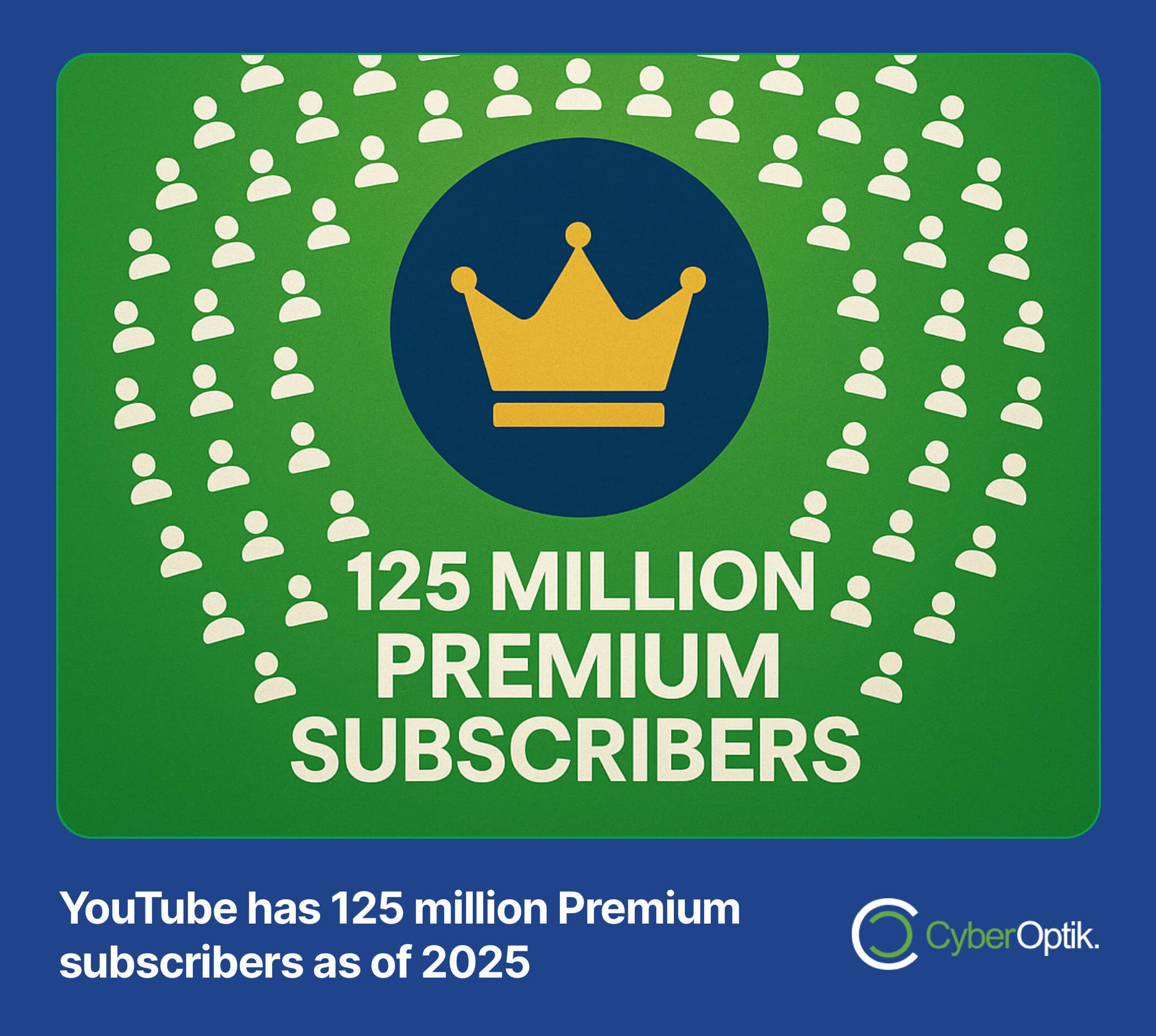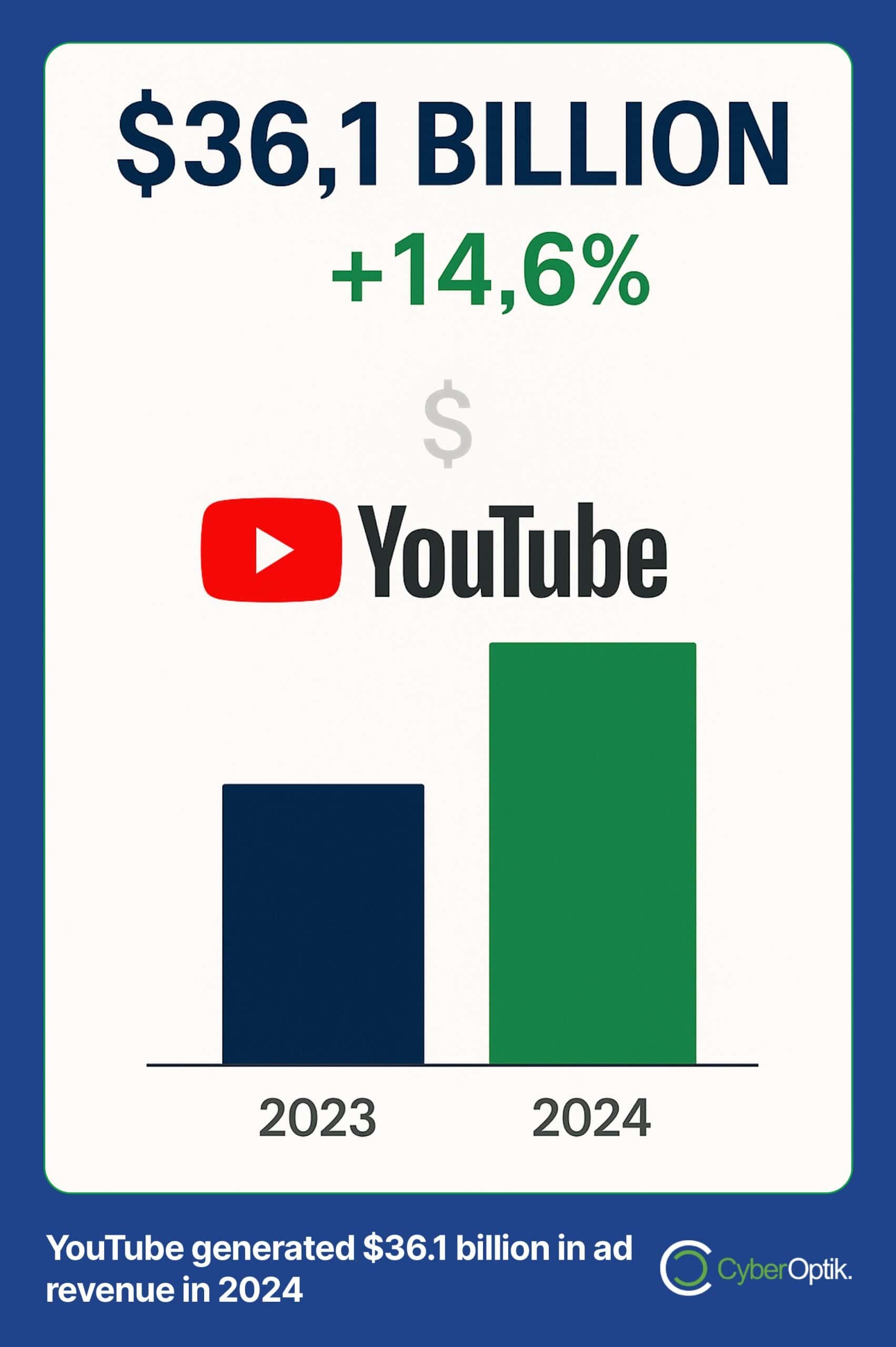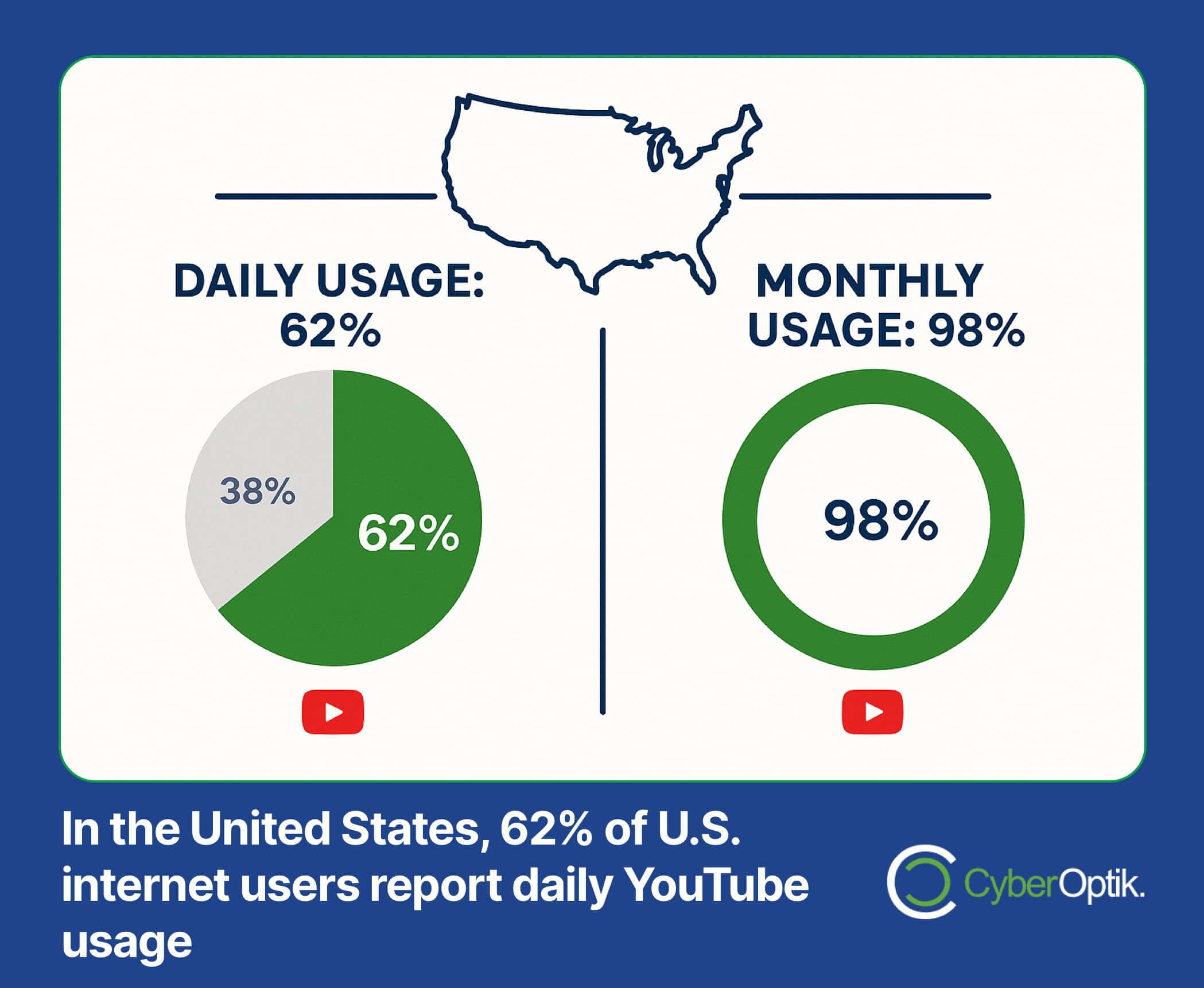Video content has become essential for effective online communication. It engages visitors and explains complex concepts quickly. YouTube stands as the undisputed leader in video hosting and sharing.

YouTube reached 2.53 billion monthly active users as of January 2025. This massive audience makes it the ideal platform for hosting your video content. Leveraging YouTube’s infrastructure while maintaining control over how videos display on your WordPress site requires specialized plugins.
Why YouTube Video Integration Matters for Your WordPress Website
Video content works. It helps visitors understand your products and services better than text alone. Studies show videos retain attention longer than other media types.

Approximately 122 million users access YouTube daily in the United States. This massive daily engagement represents potential viewers for your business content. WordPress sites that effectively integrate YouTube videos can tap into this engaged audience.
Adding videos to your site offers several benefits. They increase time on page and improve conversion rates. Videos also help explain complex topics that text alone might struggle to convey.
YouTube’s Dominant Position in Online Video
YouTube dominates video sharing and consumption online. The platform generated $36.1 billion in ad revenue in 2024, a 14.6% year-over-year increase. This financial success reflects its central position in the online video ecosystem.

The platform has 125 million Premium subscribers as of 2025. These users pay monthly for an enhanced experience. Their willingness to pay demonstrates the value people place on quality video content.

Benefits of Embedding YouTube Videos on Your Website
Adding YouTube videos to your WordPress site offers numerous advantages. We’ve seen these benefits across many client websites we’ve developed.
- Increased engagement – Videos typically hold visitor attention longer than text
- Improved SEO potential – Video content can boost your search visibility
- Reduced hosting costs – YouTube hosts your videos for free
- Better explanation of complex topics – Visual demonstrations clarify difficult concepts
- Professional appearance – Well-produced videos enhance your brand’s credibility
These benefits drive more businesses to integrate video content. With proper implementation, YouTube videos enhance rather than distract from your site’s goals.
Limitations of Default YouTube Embeds
WordPress allows basic YouTube embedding. Simply paste a YouTube URL into your editor and it works. This simplicity comes with drawbacks.
Default embeds lack customization options. They show YouTube branding and suggested videos that could lead visitors away from your site. Control over appearance and functionality remains limited without plugins.
Let’s examine these limitations in detail. Understanding them helps explain why specialized plugins offer valuable solutions for WordPress site owners.
| Default Embed Limitation | Impact on Website | How Plugins Help |
|---|---|---|
| Limited styling options | Videos may clash with your website design | Custom controls, colors, and player styling |
| Suggested videos after playback | Viewers may leave your site for other content | Option to disable related videos |
| Performance impact | Slower page load times affecting SEO | Lazy loading and optimization features |
| Limited gallery options | Difficult to display multiple videos attractively | Grid, carousel, and playlist display options |
| Basic analytics only | Limited insight into viewer behavior | Enhanced tracking and performance statistics |
These limitations become more problematic as video becomes central to your content strategy. Specialized WordPress plugins solve these issues while adding powerful features.
Essential Features to Look for in YouTube WordPress Plugins
Quality YouTube plugins share certain key features. They enhance your site’s video capabilities while maintaining performance. Not all plugins are created equal.
Our experience in custom WordPress website design has shown that the right plugin can significantly impact video effectiveness. Consider these essential features when selecting a YouTube plugin:
- Responsive design – Videos must display properly on all devices
- Customization options – Controls over player appearance, colors, and branding
- Gallery and playlist support – Ability to display multiple videos attractively
- Performance optimization – Lazy loading to reduce impact on page speed
- SEO enhancements – Schema markup and metadata optimization for videos
- Privacy features – GDPR compliance and cookie consent management
- Analytics integration – Tracking video performance and viewer behavior
These features help you select the best plugin for your specific needs. The right choice depends on your particular video strategy and business goals.
Responsive Design and Mobile Optimization
Mobile users watch videos frequently. A good YouTube plugin ensures videos display properly across all devices. This responsiveness affects user experience directly.
The plugin should automatically adjust video dimensions. It must maintain aspect ratios without breaking your site layout. This adaptive behavior is crucial for mobile-friendly websites.
We’ve found that mobile optimization significantly impacts engagement metrics. Videos that play smoothly on mobile devices see higher completion rates and better conversion performance.
Customization and Branding Options
Your videos should match your brand identity. Quality plugins offer customization of player colors, controls, and overall appearance. These options help integrate videos seamlessly.
The ability to remove or minimize YouTube branding matters. Too much YouTube branding can distract from your site’s identity. Good plugins allow control over these elements.
Custom thumbnails and player designs enhance professionalism. They create a cohesive visitor experience that aligns with your overall web design.
Performance Impact and Optimization
Videos can slow down your website. Premium YouTube plugins include page speed optimization features like lazy loading. These features delay loading video resources until needed.
Speed matters for SEO and user experience. Google uses page speed as a ranking factor. Visitors abandon slow-loading pages quickly.
The best plugins balance quality and performance. They deliver crisp videos while minimizing the impact on your site’s loading times. This balance is crucial for maintaining good SEO.
Top YouTube Plugins for WordPress
Several plugins stand out in the WordPress ecosystem. Each offers unique features and benefits for different needs. Let’s examine the best options.
Our team has tested these plugins extensively. We’ve implemented them on client sites with varying requirements. This real-world experience informs our recommendations.
Here are the top YouTube plugins for WordPress in 2025. Each excels in specific use cases and scenarios.
Embed Plus for YouTube (YouTube Pro)

Embed Plus offers both free and premium versions. The free version provides solid basic functionality. Its pro version unlocks advanced features for serious users.
Key features include responsive video embedding, lazy loading, and gallery options. The premium version adds playlist capabilities, custom thumbnails, and advanced analytics integration.
This plugin works well for business sites needing reliable video embedding. Its clean interface makes it accessible to users of all technical levels. Small to medium businesses find this plugin particularly valuable.
YouTube Feed Pro

YouTube Feed Pro specializes in displaying YouTube channels. It creates attractive video feeds that automatically update as you add new content. This automation saves significant time.
The plugin offers multiple layout options including grid, gallery, and carousel displays. It seamlessly integrates with YouTube channels and playlists. The customization options allow matching to your site design.
Content creators who regularly publish YouTube videos benefit most. The feed automatically updates when new videos are published. This feature keeps your website current with minimal effort.
Tutor LMS
While primarily an LMS plugin, Tutor LMS offers excellent YouTube integration. It organizes videos into courses and lessons effectively. This structured approach works well for educational content.
The plugin includes features for tracking student progress through video content. It integrates assessment options alongside video lessons. This combination creates a complete learning experience.
Educational websites and online course creators should consider this option. Its specialized features support structured learning experiences. The integration of assessments with video content enhances educational effectiveness.
WP YouTube Lyte
WP YouTube Lyte focuses on performance optimization. It uses a unique approach that loads video players only when users click to watch. This technique dramatically improves page loading speed.
The plugin reduces initial page weight by displaying lightweight thumbnails. It loads the full YouTube player only when needed. This approach significantly improves website loading speed.
Sites with multiple videos per page benefit most from this plugin. Its performance focus helps maintain fast loading times even with video-heavy content. Speed-conscious website owners should consider this option.
Video Gallery – YouTube Gallery

This Video Gallery plugin specializes in creating attractive video galleries. It offers multiple layout options and styling capabilities. These features help organize large video collections effectively.
The plugin includes filterable galleries and category organization. Users can easily find relevant videos in large collections. The responsive design ensures proper display across all devices.
Websites with large video libraries gain the most value. The organization features help visitors navigate extensive collections. Media-heavy sites should consider this specialized gallery solution.
Comparing Top YouTube Plugins for WordPress
Choosing between plugins requires understanding their differences. Each excels in different areas and use cases. Direct comparisons help identify the best option for your needs.
We’ll examine features, pricing, and performance factors. This comprehensive analysis helps match plugins to specific requirements. Your choice should align with your particular video strategy.
Let’s start by comparing the key features of each plugin. This table highlights the core capabilities and limitations of each option.
| Plugin Name | Responsive Design | Lazy Loading | Gallery Options | Playlist Support | Custom Branding | Analytics |
|---|---|---|---|---|---|---|
| Embed Plus for YouTube | Yes | Yes (Pro) | Yes | Yes (Pro) | Limited (Pro) | Yes (Pro) |
| YouTube Feed Pro | Yes | Yes | Yes | Yes | Yes | Limited |
| Tutor LMS | Yes | No | Course Format | Yes | Limited | Learning Focus |
| WP YouTube Lyte | Yes | Yes+ | No | Limited | No | No |
| Video Gallery | Yes | Yes | Yes++ | Yes | Yes | No |
Now let’s compare pricing and licensing models. Cost considerations often play a key role in plugin selection decisions.
| Plugin Name | Free Version | Premium Starting Price | Licensing Model | Updates & Support |
|---|---|---|---|---|
| Embed Plus for YouTube | Yes (Limited) | $49/year | Annual Subscription | 1 year |
| YouTube Feed Pro | Limited Version | $79/year | Annual Subscription | 1 year |
| Tutor LMS | Yes | $149/year | Annual Subscription | 1 year |
| WP YouTube Lyte | Yes (Full) | Free | Open Source | Community |
| Video Gallery | Yes (Limited) | $39/year | Annual Subscription | 1 year |
Performance impact remains a critical consideration. Let’s examine how these plugins affect page loading times and overall site performance.
| Plugin Name | Initial Page Load Impact | File Size Added | Performance Optimization Features | Best For |
|---|---|---|---|---|
| Embed Plus for YouTube | Moderate | ~130KB | Lazy loading, delayed scripts | Balance of features and performance |
| YouTube Feed Pro | Moderate-High | ~250KB | Caching, staggered loading | Feature-rich implementations |
| Tutor LMS | High | ~450KB+ | Limited for video specifically | Educational sites prioritizing features |
| WP YouTube Lyte | Very Low | ~30KB | Click-to-load, thumbnail only | Performance-critical websites |
| Video Gallery | Moderate | ~180KB | Lazy loading, optimized assets | Gallery-focused implementations |
These comparisons highlight the trade-offs between features and performance. Your choice should align with your specific priorities and requirements.
How to Choose the Right YouTube Plugin for Your WordPress Website
Selecting the right plugin requires understanding your specific needs. Different business websites have varying requirements. Your video strategy should drive your plugin choice.
Consider your content type, technical requirements, and business goals. These factors determine which plugin features matter most. Prioritize features that align with your specific use case.
Let’s explore how to match plugins to different website types and requirements.
Based on Website Type
Different website types have unique video integration needs. E-commerce sites might prioritize product videos with strong calls to action. Educational sites need structured course formats with progression tracking.
Corporate sites often need clean, branded players that maintain professional appearance. Blog and content sites might prioritize gallery displays and playlist management. Match your plugin to your website’s primary purpose.
The user experience should feel natural for your specific audience. The plugin should enhance rather than distract from your site’s main objectives.
Based on Technical Requirements
Technical considerations play a major role in plugin selection. Sites using cache plugins need YouTube plugins designed for compatibility. Performance-focused sites should prioritize lightweight options.
Consider your hosting environment and server resources. Some plugins require more server resources than others. Match plugin requirements to your available technical resources.
Compatibility with other plugins matters too. Choose options that work well with your existing WordPress ecosystem. This harmony prevents conflicts and technical issues.
Based on Content Strategy
Your content strategy should influence plugin selection. Regular YouTube publishers need feed-style plugins that automatically update. One-time video publishers might prioritize customization over feed capabilities.
Consider how central video is to your content strategy. Sites where video is primary need more robust options. Sites using occasional videos can often use simpler solutions.
The volume of videos also matters. Large video libraries require strong organization and gallery features. Sites with few videos can focus on quality over quantity features.
Maximizing User Engagement with YouTube Plugins
Implementing YouTube plugins effectively requires strategic thinking. Simply adding videos isn’t enough. Their presentation and integration affect audience engagement significantly.

User behavior data supports this approach. In the United States, 62% of U.S. internet users report daily YouTube usage, with 98% accessing it monthly. This high engagement rate represents opportunity for well-implemented videos.
Let’s examine strategies for maximizing engagement with your embedded YouTube content.
Strategic Video Placement
Video placement impacts effectiveness dramatically. Placing videos above the fold increases view rates. Strategic positioning near relevant text enhances context and understanding.
Match video content to user intent at different stages. Introductory videos work well on landing pages. Detailed tutorials fit better on product pages or support sections.
Consider user flow through your site. Place videos where they answer questions users have at specific points. This contextual placement improves engagement and conversion rates.
Optimizing Thumbnails and Presentation
Thumbnails greatly impact click rates. Custom thumbnails typically outperform auto-generated options. Quality plugins allow custom thumbnail selection or uploading.
Player size and positioning affect engagement too. Ensure videos are large enough to view comfortably without overwhelming other content. Mobile responsiveness remains particularly important.
Consider using playlists or galleries for related content. These features keep users engaged with multiple videos. They increase overall time on site and content consumption.
Implementation Best Practices for YouTube Plugins
Proper implementation ensures maximum benefit from your chosen plugin. Technical execution affects both user experience and SEO performance. Following best practices prevents common problems.
Our experience with client websites has identified several critical factors. These considerations help avoid pitfalls during implementation. They ensure smooth integration with your overall WordPress site.
Let’s explore the most important implementation best practices.
Performance Optimization Tips
Performance impacts both user experience and SEO. Videos can significantly affect page loading times. Implementing proper optimization techniques minimizes this impact.
- Enable lazy loading – Delay video loading until the user scrolls near it
- Optimize thumbnail quality – Balance appearance with file size
- Limit videos per page – Avoid overloading single pages with multiple videos
- Use a caching plugin – Complement your video strategy with site-wide caching
- Monitor load times – Regularly test page speed with tools like Google PageSpeed Insights
These optimizations maintain site performance while delivering quality video experiences. They balance engagement potential with technical considerations.
Mobile Responsiveness Considerations
Mobile viewers have different needs than desktop users. Videos must function properly on smaller screens. Responsive design ensures a consistent experience across devices.
Test your video implementation on multiple devices. Check different screen sizes and orientations. Verify that controls remain accessible on touch screens.
Consider mobile bandwidth limitations. Some plugins offer lower resolution options for mobile users. This adaptability improves the experience for users with data constraints.
Common Implementation Mistakes to Avoid
Certain mistakes repeatedly appear in YouTube plugin implementations. Awareness helps you avoid these common pitfalls. Prevention is easier than fixing problems after launch.
- Autoplay overuse – Automatically playing videos frustrates users and impacts loading time
- Poor mobile testing – Failing to verify function on all devices
- Ignoring SEO opportunities – Not utilizing video schema markup and metadata
- Neglecting analytics – Failing to track video performance metrics
- Using outdated plugins – Not keeping plugins updated for compatibility and security
Avoiding these mistakes improves both user experience and technical performance. A thoughtful implementation delivers better results for your website.
Conclusion: Selecting the Best YouTube Plugin for Your WordPress Site
The right YouTube plugin enhances your WordPress site significantly. It improves user engagement while maintaining technical performance. Your specific needs should guide your selection.
Consider your primary goals, technical requirements, and content strategy. Evaluate plugins based on features most relevant to your situation. Remember that performance impact matters alongside functionality.
We’ve found that most business websites benefit from these optimization approaches. The investment in proper video integration pays dividends through improved engagement and conversions.
Next Steps for WordPress Video Integration
Take time to evaluate your current video strategy. Identify areas where enhanced YouTube integration could benefit your site. Consider how your audience engages with video content.
Test multiple plugins if possible. Many offer free versions or trial periods. This hands-on experience reveals which option best fits your workflow and requirements.
For personalized guidance on WordPress YouTube integration, contact our team. Our expertise in custom WordPress website design includes video optimization strategies tailored to your business goals.




